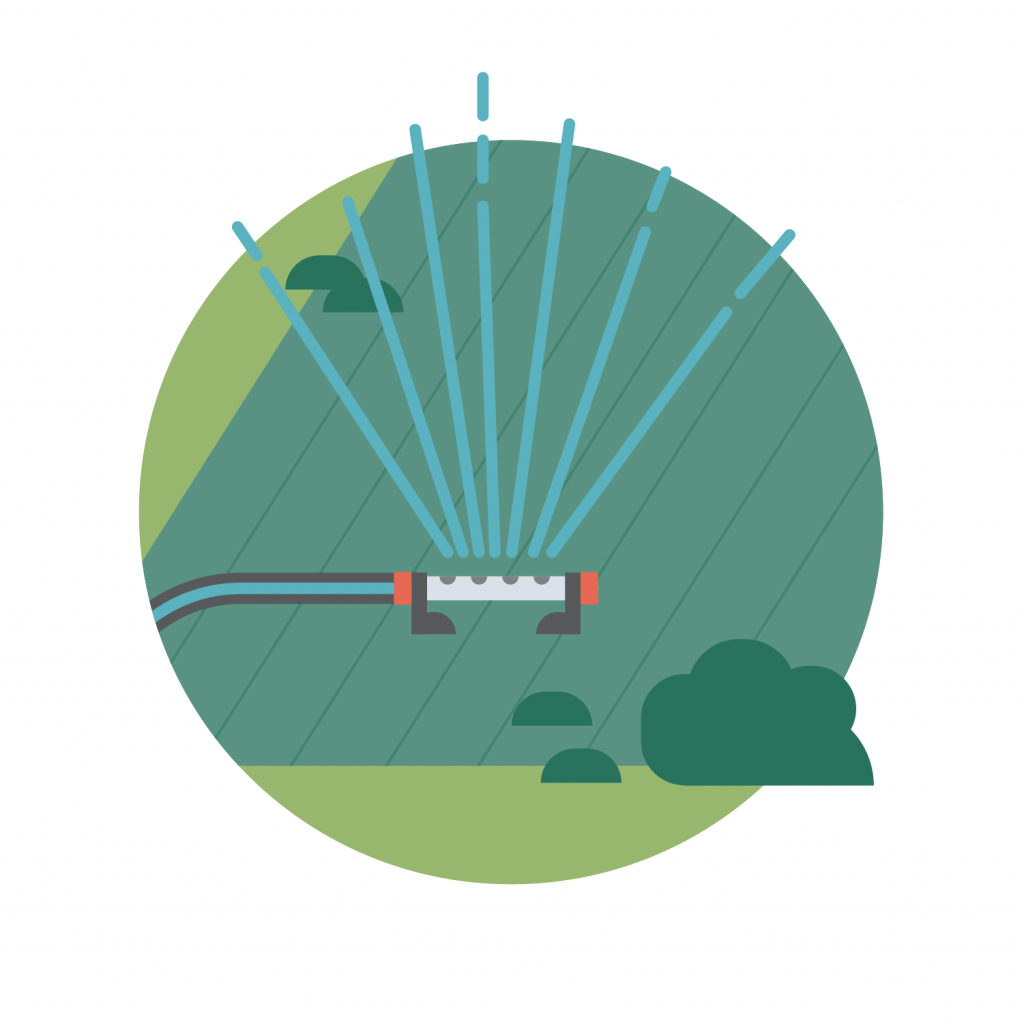Follow the Drop – Lawn and Garden Watering

Lawn and Garden Watering
In the Bow River Watershed, a significant portion of domestic water demand in the summer months is used for watering lawns and gardens. As a drop of water in this process, you will hopefully seep into the ground and be taken up by the roots of grass or a plant. Unfortunately, significant amounts of water are sprayed by sprinkler or automatic irrigation systems onto areas that do not need water (including sidewalks). These systems also waste water by turning on automatically, even when the soil is already saturated. Both of these situations result in water running off of the place it was intended to go.
The quality of runoff water is impacted when it collects chemicals from lawn treatments, including fertilizers and herbicides. Runoff also collects debris, oils, washer fluid, rubber, and other chemicals that wash off of roads and into the stormwater system.
Storm drain pipes, unlike pipes from homes, are not usually connected to wastewater treatment plants. Instead, water in storm drain pipes lead to stormwater management ponds, or they feed directly into our rivers. Although there are solutions in place to reduce contamination (including debris filters at storm drain outlets, having biological filters at storm drain outlets, and putting fish symbols on storm drains on roads so people know where water is going), water quality is impacted in these situations.
Definition
Contamination: A substance that, in a sufficient concentration, will cause adverse effects to water, land, fish, or other things potentially rendering it unusable.

Where next?
After learning about what happens to water intended to “green up” the lawn, the next step in your journey should be interesting! Do you want to seep past the plant roots and into the groundwater, be taken up by grass or garden plant roots, or head back via the storm drain to the middle portion of the Bow River?
